pc
Eufloria
 Originally known as Dyson during its prototype stage, Eufloria is self-described as a "space gardening RTS." What that means is not very clear without some description, but in essence, Eufloria is about growth and destruction. Building up your own spores of pollen to seed across the galaxy and wreack havoc on your enemies. Any tree not your color is marked for death and total domination is necessary for your own survival.
Originally known as Dyson during its prototype stage, Eufloria is self-described as a "space gardening RTS." What that means is not very clear without some description, but in essence, Eufloria is about growth and destruction. Building up your own spores of pollen to seed across the galaxy and wreack havoc on your enemies. Any tree not your color is marked for death and total domination is necessary for your own survival.
Well, that might sound cooler than it actually is, but Eufloria is our latest go-around at Indie Impressions. Developed by a trio of indie devs, Eufloria was released in 2009 for Windows and later released on Linux, OSX, iOS, Android, and PlayStation Network. Here is Steve and Greg's take on the game after playing a few hours.
Penny Arcade's On The Rain-Slick Precipice of Darkness 3
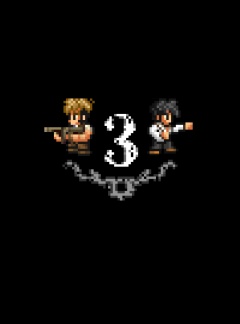 A few weeks ago, I acquired Breath of Death VII: The Beginning, Cthulhu Saves the World, and all three episodes of Penny Arcade Adventures
for eight bucks on Steam. It seemed like a steal at the time: five
brief RPG comedies for less than I spend on my daily commute.
A few weeks ago, I acquired Breath of Death VII: The Beginning, Cthulhu Saves the World, and all three episodes of Penny Arcade Adventures
for eight bucks on Steam. It seemed like a steal at the time: five
brief RPG comedies for less than I spend on my daily commute.
I dropped Breath and Cthulhu after a few hours. Zeboyd’s nutty tributes to ‘80s JRPGs had their moments, but not enough to excuse dull battles, random encounters, and big empty dungeons.
The first two Penny Arcade games weren’t much better. My disgust for their fetch quest campaign structure smothered my fondness for the Mario RPG-style battles.
So when I saw that Penny Arcade’s Whatever 3 was the result of a Zeboyd/Penny Arcade team-up, I braced myself for some whole new amalgam of repulsive game elements. It turned out to be a roundly enjoyable seven-hour adventure, one that almost excuses the twelve hours I slogged through the other four games in the bundle. Almost.
Wizorb
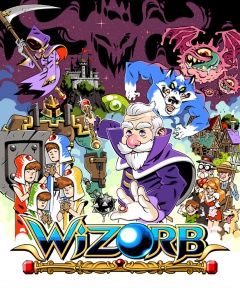 Breakout and Arkanoid and similar paddle games never resonated with me. Maybe because their Atari heyday ended before I started playing games, or maybe because I disliked the loose shot control. Whatever the case, the genre’s most polished and inspired entries still manage only a passing fancy.
Breakout and Arkanoid and similar paddle games never resonated with me. Maybe because their Atari heyday ended before I started playing games, or maybe because I disliked the loose shot control. Whatever the case, the genre’s most polished and inspired entries still manage only a passing fancy.
So I’m flummoxed by my lingering affinity for Wizorb, a three-dollar, three-hour curiosity. I completed the brief game in a weekend fling and have no real desire to revisit it, yet it’s still on my mind. I do relish the lively lo-fi style and RPG window dressing, but the game is still a pretty standard brick breaker at its core.
I’m not terribly impressed by this new appstore era, this flood of amateur developments selling for less than a vending machine lunch and rarely lasting as long. But Wizorb is one of the few $3 games that’s more filling than its price tag and play time imply. A few thoughtful little gameplay functions that address the genre’s weaknesses are what make it shine among its Breakout-clone peers and its bottom-dollar indie competition both.
Rayman Origins
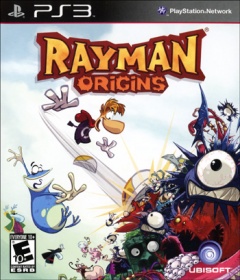 I never quite bought into the whole Achievements deal this generation. It's nice to have a (rather arbitrary) tally of "gamerness" on record, and I do like to occasionally check my friends' progress. But the achievements themselves tend to make a goal out of lengthy tedium, a checklist asking the player to kill X enemies using Y weapon, in a way that mimics the worst parts of grind-dependent MMOs. It's far from the creative metagame that I'd hoped would evolve through the generation.
I never quite bought into the whole Achievements deal this generation. It's nice to have a (rather arbitrary) tally of "gamerness" on record, and I do like to occasionally check my friends' progress. But the achievements themselves tend to make a goal out of lengthy tedium, a checklist asking the player to kill X enemies using Y weapon, in a way that mimics the worst parts of grind-dependent MMOs. It's far from the creative metagame that I'd hoped would evolve through the generation.
As a result, my PSN trophy list accounted for 65 games long but lacked a platinum trophy. I had ambitions to 100% my very first PS3 game, Uncharted 2, until I saw that the majority of the trophies were based on finding "treasures" in the game, essentially an overgrown pixel hunt. I don't regret giving up that chase shortly after it began, and it kind of soured me on trophies in general. Still, there has always been this nagging feeling that, having played so many PS3 games, I should get one platinum trophy before the next generation arrives. Some people aspire to run one marathon in their lives. I figured I should have one pointless digital knickknack.
Now I have one. It's a bit underwhelming, actually. Maybe that's because it only took about fifteen hours of game time to achieve. Or maybe it's because Rayman Origins is fun enough that, even if the game lacked trophies, I would have finished all the requirements anyway.
Rayman Origins
 I had never played a Rayman game before last year, when I tried Rayman 3D. A port of the most renowned Rayman game,
it didn't exactly endear the limbless whatsit to me. So when Rayman
Origins was released six months ago, I was too busy scampering through Super Mario 3D Land to care.
I had never played a Rayman game before last year, when I tried Rayman 3D. A port of the most renowned Rayman game,
it didn't exactly endear the limbless whatsit to me. So when Rayman
Origins was released six months ago, I was too busy scampering through Super Mario 3D Land to care.
Thus, I was busy gazing into a 3D mushroom kingdom when Origins earned rave reviews. The acclaim seemed fruitless, as Rayman Origins found slow initial sales and an early price slash. Still, the game made enough cash that a sequel is (almost certainly) on the way.
I had intended to check out Rayman Origins since it was showered with critical adulation, but it was the sequel leak (and heavy discounting) that pushed me into finally buying the game. I'm pretty keen at picking apart platformers in just a few minutes of play, so my first impressions of the game all but cemented my new outlook on Rayman.
Anomaly: Warzone Earth
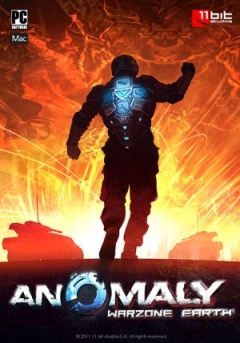 If someone tells you they're going to do a "reverse" something, odds are the result will be terrible. The concept sounds similarly cheesy for games, evoking memories of bad minigames and multiplayer modes. However, for some genres it actually could be a fresh take on the concept, and 11-Bit Studios tries to prove this with their "reverse tower defense" game, Anomaly: Warzone Earth. 11-Bit is a brand new developer out of Poland, powered by a small team of industry veterans. It appears that they've taken an independent mindset towards publishing and distributing, releasing Anomaly directly to Steam and the Mac Store. Thus far, they seem to be having a good deal of success and are proving capable in quickly porting their game to new platforms, including iOS, Kindle Fire (!) and an upcoming XBLA release.
If someone tells you they're going to do a "reverse" something, odds are the result will be terrible. The concept sounds similarly cheesy for games, evoking memories of bad minigames and multiplayer modes. However, for some genres it actually could be a fresh take on the concept, and 11-Bit Studios tries to prove this with their "reverse tower defense" game, Anomaly: Warzone Earth. 11-Bit is a brand new developer out of Poland, powered by a small team of industry veterans. It appears that they've taken an independent mindset towards publishing and distributing, releasing Anomaly directly to Steam and the Mac Store. Thus far, they seem to be having a good deal of success and are proving capable in quickly porting their game to new platforms, including iOS, Kindle Fire (!) and an upcoming XBLA release.
Devil May Cry 3: Dante's Awakening
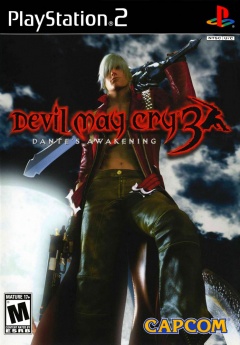 The video game industry isn't as surprising as we'd like to think. Sequels
rule the sales charts, and even new IPs tend to be paint jobs of
proven gameplay schemes. It's easy to point the finger at developers and
publishers, but let's take a look at a few of the bigger gambles that
companies have taken with their properties.
The video game industry isn't as surprising as we'd like to think. Sequels
rule the sales charts, and even new IPs tend to be paint jobs of
proven gameplay schemes. It's easy to point the finger at developers and
publishers, but let's take a look at a few of the bigger gambles that
companies have taken with their properties.
Back in 2001,
the first footage for the next Legend of Zelda caused some serious
uproar when, rather than an updated Ocarina of Time fantasy setting, the
new game went with a wholly cel-shaded, cartoony art style. Many had
been won over by the charming new Link by the game's release, but I
bet that just as many swore off Nintendo for good after this "kiddie"
debacle. Later in 2001, those who had recently purchased Metal
Gear Solid 2 were appalled to find the game had pulled a bait-and-switch,
tossing the series' longtime protagonist Solid Snake aside within the
first hour of the game for a never before seen pretty boy. The ensuing
explosion of discontent was megaton in proportion.
Nintendo and
Konami have had their share of death threats on message boards for these
switcheroos, and now it seems Capcom's neck is on the chopping block.
The long-rumored Devil May Cry 5 was finally made public at TGS 2010 as
"DmC," and fans were shocked to see that it would reboot the series with
a new, barely recognizable, adolescent punk version of cocky anti-hero
protagonist Dante. Further, Capcom itself isn't even spearheading the
development of the title, leaving Heavenly Sword developer Ninja Theory
in charge. The response has been
almost entirely negative.
Trine
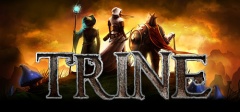 Trine is the kind of game you can't help but wish came along more often, as a rare legitimate platformer. Frozenbyte (along with certain notable indie developers) shows us that 2d platforming is in fact not dead and can be pushed as far as you'll willing to take it. Perhaps most impressively, Trine is in elite company as one of the few download-centric titles that could be mistaken as a traditional retail release.
Trine is the kind of game you can't help but wish came along more often, as a rare legitimate platformer. Frozenbyte (along with certain notable indie developers) shows us that 2d platforming is in fact not dead and can be pushed as far as you'll willing to take it. Perhaps most impressively, Trine is in elite company as one of the few download-centric titles that could be mistaken as a traditional retail release.
For example, check a screenshot of some random game. You likely see an area with a background, or maybe walls or repeating buildings. Perhaps an enemy or two are in the frame and an interactive objects of note. Now take a look at random screenshot of Trine. You see a struggling forest that has been encroached on by both technology and a plague of death. The foreground partially hides you in sparse blades of grass, a handful of flowers, and a large warped tree root. In the background, multiple metallic gears are encrusted into the hill, which is itself overlooked by a towering mountain. The sunlight beaming from above onto wild mushrooms is nothing but welcoming as your knight just escaped from the cave and is heading to a well-constructed but still wobbly bridge up ahead. While one could say such lush descriptions could be extrapolated out of any image; to me, the difference is clear. Trine tries to feed your imagination and create an organic, living environment. While the experience does not stay fully fresh the entire way, Trine has more than enough creativity and character to deserve a second look, as noted in our earlier first hour playthrough.
Caelum
 What would you think when told of a game combining elements of pachinko, Arkanoid and Puzzle Bobble? Like me, you'd probably be a bit confused. Probably something involving balls being shot and bounced around. The concept was interesting enough to try when we received a request to review the Caelum by ApGames. The upstart Swedish developers recently released their self-proclaimed "addictive physics-based arcade game." So let's get right into it and see how the unique gameplay combinations measure up.
What would you think when told of a game combining elements of pachinko, Arkanoid and Puzzle Bobble? Like me, you'd probably be a bit confused. Probably something involving balls being shot and bounced around. The concept was interesting enough to try when we received a request to review the Caelum by ApGames. The upstart Swedish developers recently released their self-proclaimed "addictive physics-based arcade game." So let's get right into it and see how the unique gameplay combinations measure up.
Half-Life 2
 It's hard to find a gamer who doesn't have some experience with the Half-Life franchise. A champion of PC software when things started shifting heavily in the favor of consoles, the original Half-Life wowed critics with its pulse-pounding scripted sequences and seamless stitching of narrative and gameplay in first-person. The long-awaited full sequel, Half-Life 2, received just as many accolades, if not more, for its advances in artificial intelligence, character animation, and especially the robust physics engine powering the game's many objects.
It's hard to find a gamer who doesn't have some experience with the Half-Life franchise. A champion of PC software when things started shifting heavily in the favor of consoles, the original Half-Life wowed critics with its pulse-pounding scripted sequences and seamless stitching of narrative and gameplay in first-person. The long-awaited full sequel, Half-Life 2, received just as many accolades, if not more, for its advances in artificial intelligence, character animation, and especially the robust physics engine powering the game's many objects.
And yet, it was only two weeks ago that I first experienced a game in Valve's flagship franchise myself. I've never been much of a PC gamer: I can count the number of games I've played on a computer monitor on one hand, and four of them begin with the words "Star Wars." I've had many consoles in my life, but rarely a PC with the power to play current games. I'm actually typing this on a Macbook right now, and as we all know, Macs just aren't for gamers.
That said, Valve has made an effort to bite into the Apple market with Mac versions of Steam and many of its own big games offered therein, just in time for the annual 4th of July sales on the incredible digital distribution service. And if Valve is willing to create a Mac version of Half-Life 2 and price it at an outrageously fair $3.39 just for me, then I guess I owe it to them to try the game that millions have gone headcrab-crazy for.
But for all its fame and glory, the bottom line is that Half-Life 2 is a six-year-old PC game in a genre I'm not terribly enthralled by. Did I hate it? Hit the jump, smash that caps lock key and ready your profane comments, PC fanboys, because I'm about to tear into your beloved Half-Life 2 like a shotgun into an antlion.
